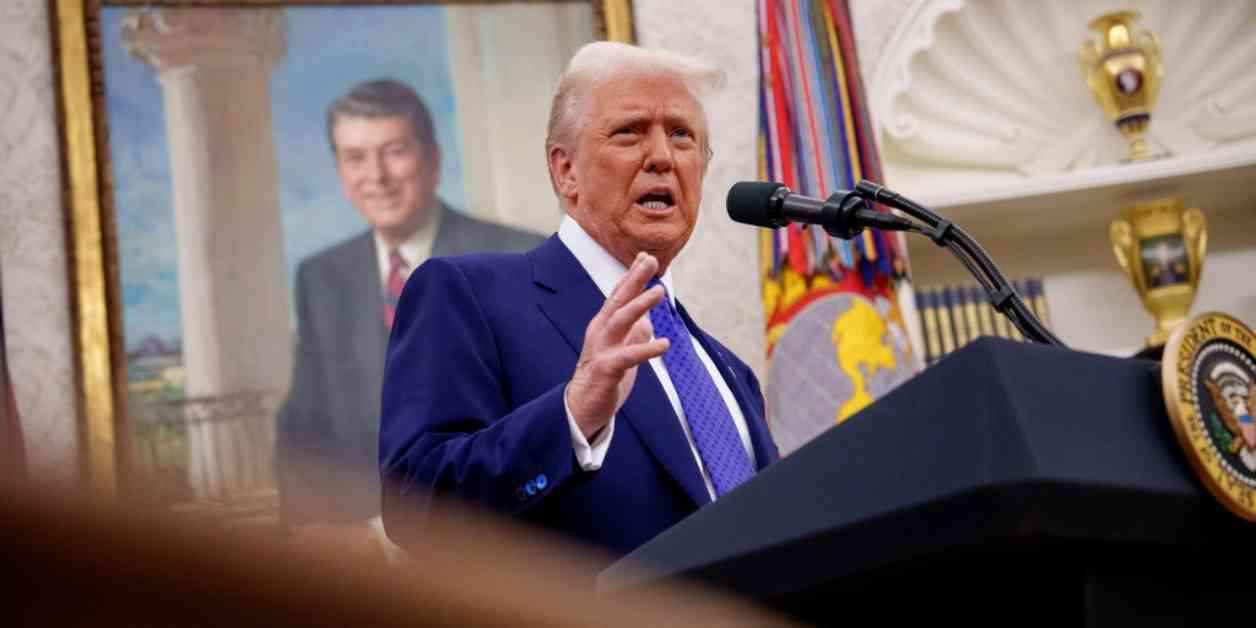President Donald Trump recently made a bold move by signing a memorandum that could potentially change the landscape of U.S. trade relations with its major partners. The memo, calling for “fair and reciprocal” trade tariffs, has stirred up discussions and concerns across various sectors. With the clock ticking on a 180-day deadline, the pressure is on for key officials to provide comprehensive reports and recommendations on the potential impact of these proposed measures.
Assessing the Trade Landscape
The memorandum tasks Howard Lutnick, Trump’s nominee for commerce secretary, and Jamieson Greer, the official global trade representative, with the crucial responsibility of conducting a country-by-country analysis. Their goal is to determine whether reciprocal trade remedies are necessary to ensure a fair playing field for the U.S. in the global market. Additionally, Russell Vought, nominated to head the Office of Management and Budget, is expected to submit a report on the fiscal implications of implementing these measures within the stipulated timeframe.
During the signing of the memo, President Trump emphasized the importance of fairness in trade relationships, highlighting the need for reciprocal tariffs. He expressed his intention to charge tariffs based on what other countries impose on the United States. Trump’s announcement also hinted at the possibility of additional import taxes on specific products like cars, semiconductors, and pharmaceuticals, to be introduced after the reciprocal tariffs take effect.
In a pre-signing briefing with reporters, Peter Navarro, White House senior counselor for trade and manufacturing, raised concerns about the significant trade deficit the U.S. faces with major exporting nations around the world. He specifically criticized the European Union’s value-added tax as a tactic that disadvantages U.S. exports, although this assertion has sparked debates among economic experts.
The Impact and Backlash
While Trump has initiated a series of tariff announcements, only one set has been put into practice so far—an additional 10% tariff on Chinese imports. The proposed 25% duties on steel and aluminum imports, along with those on imports from Canada and Mexico that were temporarily suspended, are scheduled to take effect in early March. However, this move has faced pushback from various quarters, with concerns raised about potential price hikes for consumers and the broader impact on the U.S. economy.
Leading businesses like Ford have expressed apprehensions about the repercussions of these tariffs, particularly on their operations in Canada and Mexico. The automotive industry, in particular, is bracing for significant disruptions if the proposed levies are imposed. A recent report by the Brookings Institution projected that the tariffs could lead to a substantial number of job losses in the U.S., further fueling the debate on their overall impact.
On the flip side, some voices like JP Morgan CEO Jamie Dimon have suggested that if the tariffs serve national security interests or lead to more favorable trade terms for the U.S., they could be justified. Dimon’s remarks at the World Economic Forum highlighted the complex considerations at play when evaluating the long-term effects of such policy decisions.
Federal Reserve Chair Jerome Powell, on the other hand, has maintained a cautious stance on the tariffs issue, refraining from direct commentary while acknowledging the potential economic repercussions. Powell emphasized that tariff policy falls within the purview of elected officials, signaling the delicate balance between economic policy and political decision-making.
In the midst of these unfolding developments, the broader implications of Trump’s tariff strategy remain uncertain. As stakeholders across industries grapple with the looming changes in trade dynamics, the ultimate impact of these measures on the U.S. economy and global trade relations remains a subject of intense scrutiny and debate.
Rob Wile, a seasoned journalist and Pulitzer Prize winner, brings a unique perspective to the unfolding narrative of Trump’s trade policy. Through his insightful reporting on breaking business stories, Wile sheds light on the complexities and implications of these policy decisions, offering a nuanced understanding of the ever-evolving dynamics of international trade.


